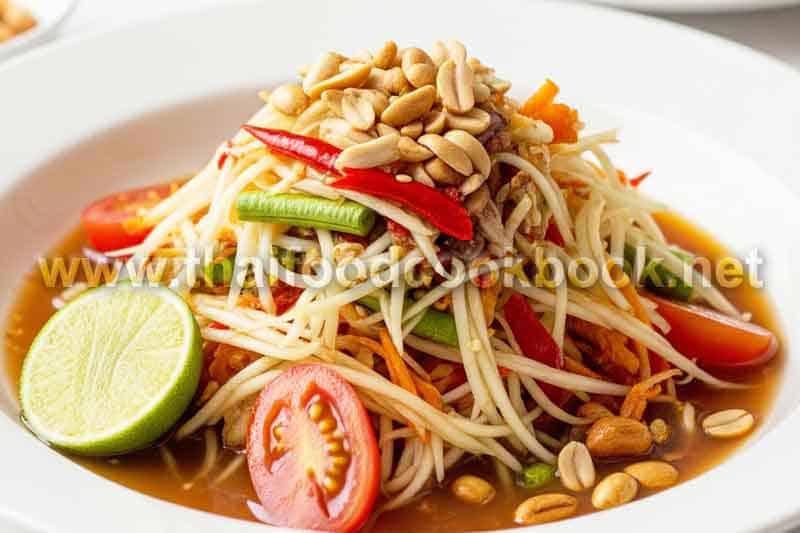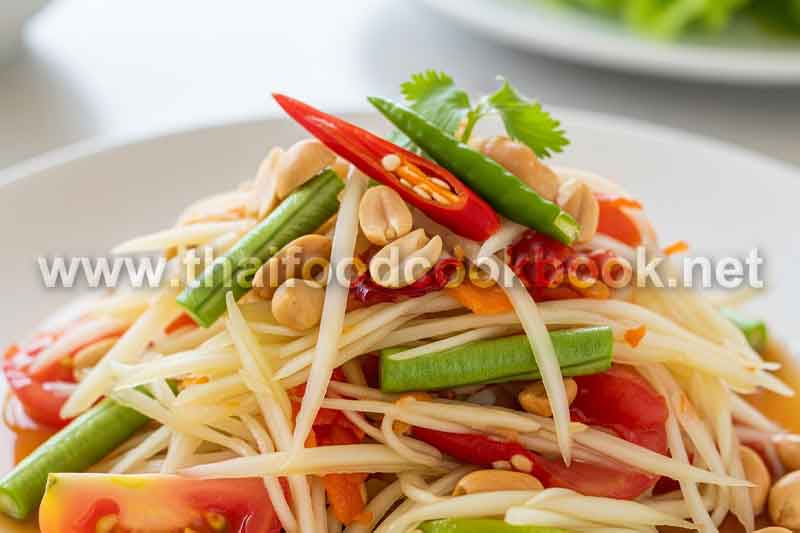What to Eat at Thailand’s Floating Markets
For many travelers, one of the biggest challenges when visiting Thailand is the overwhelming, yet delightful, array of authentic Thai dishes available at every turn, especially within the legendary floating markets. The sheer volume of delicious options being cooked right on the canals from small, bustling boats can lead to a common dilemma: What to Eat at Thailand’s Floating Markets without missing a true local gem? This experience can feel like navigating a delicious, watery maze where every vendor promises the best flavor. We understand this culinary challenge and aim to guide you through the chaotic beauty of Thai water markets, ensuring your gastronomic adventure is both effortless and unforgettable. Our comprehensive guide helps you cut through the confusion and get straight to the essential, must-try food at Damnoen Saduak floating market and other famous spots, transforming a potential culinary panic into a focused feast.
Essential Culinary Experiences: Must-Try Food at Damnoen Saduak Floating Market and Amphawa
A trip to the land of smiles is incomplete without indulging in the quintessential Thai floating market food. These markets, such as the vibrant Damnoen Saduak and the more relaxed Amphawa, serve up regional specialties that capture the heart and soul of Thai cuisine. Vendors skillfully prepare dishes on charcoal grills or small woks right on their long-tail boats, offering an unparalleled street food experience. From savory noodles to sweet, creamy desserts, these water-side stalls are the best places to sample the full spectrum of local flavors.
Top 10 Most Popular Dishes to Try
When you are exploring the narrow canals, keep an eye out for these 10 most popular and iconic dishes that define the best food at floating markets:
- Kuay Teow Reua (Boat Noodles): Small bowls of intensely flavored noodle soup, often with pork or beef and a rich, dark broth.
- Pla Pao (Salt-Crusted Grilled Fish): A whole fish, typically Tilapia or Snakehead, generously crusted in salt and grilled until the flesh is juicy and moist.
- Goong Pao (Grilled River Prawns): Huge, freshly grilled river prawns, a specialty often highlighted as a top Amphawa floating market food.
- Pad Thai: Thailand’s famous stir-fried rice noodle dish, cooked to order with shrimp, tofu, peanuts, and tamarind sauce.
- Khao Niao Mamuang (Mango Sticky Rice): Sweet, glutinous rice soaked in rich coconut milk and served with slices of ripe, fresh mango.
- Hoi Tod (Crispy Fried Mussel or Oyster Omelette): A savory, crispy egg batter mixed with mussels or oysters.
- Som Tum (Spicy Green Papaya Salad): A refreshing and spicy salad made from shredded unripe papaya, tomatoes, peanuts, and chili.
- Kanom Krok (Coconut Pancakes): Small, sweet, and creamy coconut milk griddle cakes, crispy on the outside and gooey inside.
- Moo Ping (Grilled Pork Skewers): Marinated pork grilled over charcoal, often served with a sticky rice packet.
- Coconut Ice Cream: Served directly in a coconut shell, this is the perfect cool-down treat for the tropical heat.
Recreate the Flavors: Authentic Thai Floating Market Food Recipes
While nothing beats tasting floating market food fresh off the boat, you can bring a piece of Thailand home by recreating some of these classic dishes. These recipes are staples of the market scene and will allow you to enjoy a genuine taste of Thai culture in your own kitchen.
1. Authentic Boat Noodles (Kuay Teow Reua)
This is the most iconic Thai floating market food and one of the most flavourful noodle soups in Thailand, renowned for its rich, dark broth made with pig’s blood (optional for home cooking).
Ingredients:
- Pork/Beef Broth: 6 cups
- Pork or Beef Slices: 1/2 pound, thinly sliced
- Pork Liver: 1/4 cup, sliced (optional)
- Thin Rice Noodles (Sen Lek): 8 ounces
- Soy Sauce: 2 tablespoons
- Dark Soy Sauce: 1 teaspoon
- Fermented Soybean Curd (Tao Jiao): 1 tablespoon
- Pickled Garlic and Liquid: 1 tablespoon
- Palm Sugar: 1 tablespoon
- Cinnamon Stick: 1
- Star Anise: 2 pods
- Pork Blood (or substitute with dark soy sauce for color/richness): 1-2 tablespoons (mixed with a bit of vinegar)
- Toppings: Fried pork rinds, morning glory, bean sprouts, meatballs, crushed peanuts, chili flakes.
Method:
- In a large pot, simmer the broth with cinnamon, star anise, soy sauce, dark soy sauce, fermented soybean curd, pickled garlic, and palm sugar for at least 30 minutes.
- If using pork blood, temper it by stirring it with a little vinegar and a few tablespoons of hot broth, then add to the main broth and stir until just incorporated (do not boil vigorously after adding).
- Blanch the noodles, meat slices, and vegetables briefly in a separate pot of boiling water.
- Divide the blanched noodles, meat, and vegetables into small bowls.
- Ladle the rich broth over the ingredients. Garnish with pork rinds, meatballs, and your preferred seasonings.
2. Mango Sticky Rice (Khao Niao Mamuang)
A perfect dessert found at every major market, including the must-try food at Damnoen Saduak floating market stalls.
Ingredients:
- Sweet Glutinous Rice: 1 cup
- Water: 1 cup
- Thick Coconut Milk (for the rice): 1 cup
- Sugar: 1/3 cup
- Salt (for the rice): 1/2 teaspoon
- Ripe Mangoes: 2 medium, peeled and sliced
- Thin Coconut Milk (for the topping): 1/4 cup
- Salt (for the topping): Pinch
- Topping: Toasted sesame seeds or mung beans.
Method:
- Wash the glutinous rice until the water runs clear, then soak in water overnight or for at least 4 hours. Drain and steam the rice for 20-25 minutes until tender.
- While the rice is steaming, simmer the thick coconut milk, sugar, and 1/2 teaspoon of salt until the sugar dissolves.
- Mix the steamed rice with the sweet coconut milk mixture and cover. Let it sit for 15-20 minutes to absorb the liquid.
- For the topping, gently simmer the thin coconut milk and a pinch of salt until slightly reduced.
- Serve the sticky rice with fresh mango slices and drizzle the thin, salty coconut milk topping over the rice. Garnish with toasted sesame seeds.
3. Grilled River Prawns (Goong Pao)
A specialty of the Amphawa floating market food scene, these prawns are simple to cook but require fresh, high-quality ingredients.
Ingredients:
- Large River Prawns (or King Prawns): 1 pound (4-5 prawns)
- Nam Jim Seafood (Dipping Sauce):
- Fresh Chili (Bird’s eye): 10-15 pieces (adjust to taste)
- Garlic: 5-7 cloves
- Palm Sugar: 2 tablespoons
- Fish Sauce: 3 tablespoons
- Lime Juice: 4 tablespoons
- Cilantro/Coriander Root: 1 root, crushed
Method:
- To make the Nam Jim Seafood, pound the chili, garlic, and cilantro root in a mortar and pestle until a coarse paste forms. Transfer to a bowl and mix with palm sugar, fish sauce, and lime juice until the sugar dissolves. Taste and adjust for a balance of spicy, sour, salty, and sweet.
- Rinse the prawns and lightly score the back of the shell with a sharp knife (optional, but helps with even cooking).
- Grill the prawns over medium-high heat charcoal (or on a barbecue/grill pan) for about 3-5 minutes on each side until the shells are bright orange and the meat is opaque.
- Serve the hot grilled prawns immediately with the Nam Jim Seafood dipping sauce.
4. Thai Coconut Pancakes (Kanom Krok)
A sweet treat often seen being poured into special concave pans on the boats, making it a beloved Thai floating market food snack.
Ingredients:
- Base Batter:
- Rice Flour: 1/2 cup
- Sugar: 1/4 cup
- Thick Coconut Milk: 1/2 cup
- Salt: 1/4 teaspoon
- Top Batter (Creamy Layer):
- Rice Flour: 1 tablespoon
- Coconut Milk: 1/2 cup
- Sugar: 1 tablespoon
- Salt: 1/4 teaspoon
- Toppings (Optional): Corn kernels, scallions, taro.
Method:
- Prepare the two batters separately by mixing their respective ingredients until smooth.
- Heat a Kanom Krok pan (or a takoyaki pan/mini muffin pan) and lightly grease with oil.
- Pour the Base Batter into the wells, filling them about halfway. Cook until the edges start to set.
- Add a small amount of the Top Batter (Creamy Layer) into the center of each well. Add your chosen toppings.
- Cover the pan and cook for 3-5 minutes until the edges are crispy and brown, and the center is soft and gooey.
- Carefully scoop out the individual cakes, usually pairing two halves together to form a full disc, and serve immediately.
5. Salt-Crusted Grilled Fish (Pla Pao)
This dish, often made with Pla Nin (Tilapia), is a stunning example of simple grilled perfection and a major highlight of the best food at floating markets.
Ingredients:
- Whole Fish (Tilapia or Seabass): 1 fish (around 1 pound), scaled and gutted
- Coarse Sea Salt: 1 pound
- Egg Whites: 1 large (optional, for binding the salt)
- Stuffing: Lemongrass stalks (3-4), Kaffir lime leaves (5-6), Galangal slices (5-6)
- Dipping Sauce: Nam Jim Seafood (as per the prawn recipe above)
Method:
- Rinse the fish and pat it dry. Stuff the fish cavity with the lemongrass, kaffir lime leaves, and galangal.
- Mix the coarse salt with the egg white (if using) and a little water until it has a sandy, moldable consistency.
- Cover the entire fish completely with a thick layer of the salt mixture, making sure no skin is showing.
- Grill the fish over medium heat charcoal (or on a grill) for 20-30 minutes, flipping once halfway through, depending on the size of the fish. The salt crust will be hard when done.
- To serve, crack open the hardened salt crust to reveal the moist, steamed fish meat inside. Peel away the skin and enjoy the flesh with a generous helping of Nam Jim Seafood.
Planning Your Feast: Where to Find the Best Floating Market Food
The experience of tasting Thai floating market food is as much about the atmosphere as it is about the flavors. Markets like Damnoen Saduak offer the most photogenic and bustling canal experience, making it perfect for finding traditional dishes like Boat Noodles and Mango Sticky Rice. In contrast, Amphawa is often recommended for its superior fresh seafood, including the massive Grilled River Prawns, and a more authentic, local weekend vibe, perfect for those seeking out specific Amphawa floating market food. Regardless of which market you choose, approaching the vendors with a sense of adventure is key to uncovering the true hidden gems of Thai cuisine.
In conclusion, navigating the floating markets of Thailand, whether it’s the bustling Damnoen Saduak or the seafood-rich Amphawa, is a journey into the heart of Thai street food culture. From the savory depth of Boat Noodles and the smoky delight of Grilled River Prawns to the sweet perfection of Coconut Pancakes and Mango Sticky Rice, the array of dishes promises an incredible culinary adventure. By focusing on these must-try classics and popular specialties, you can ensure you experience the best food at floating markets and create unforgettable memories. For those interested in exploring the history and cultural significance of these dishes and other Asian delicacies, further reading on the regional cooking methods provides wonderful context for your next meal. Discover more incredible Asian recipes and culinary traditions to deepen your appreciation for this vibrant cuisine.

